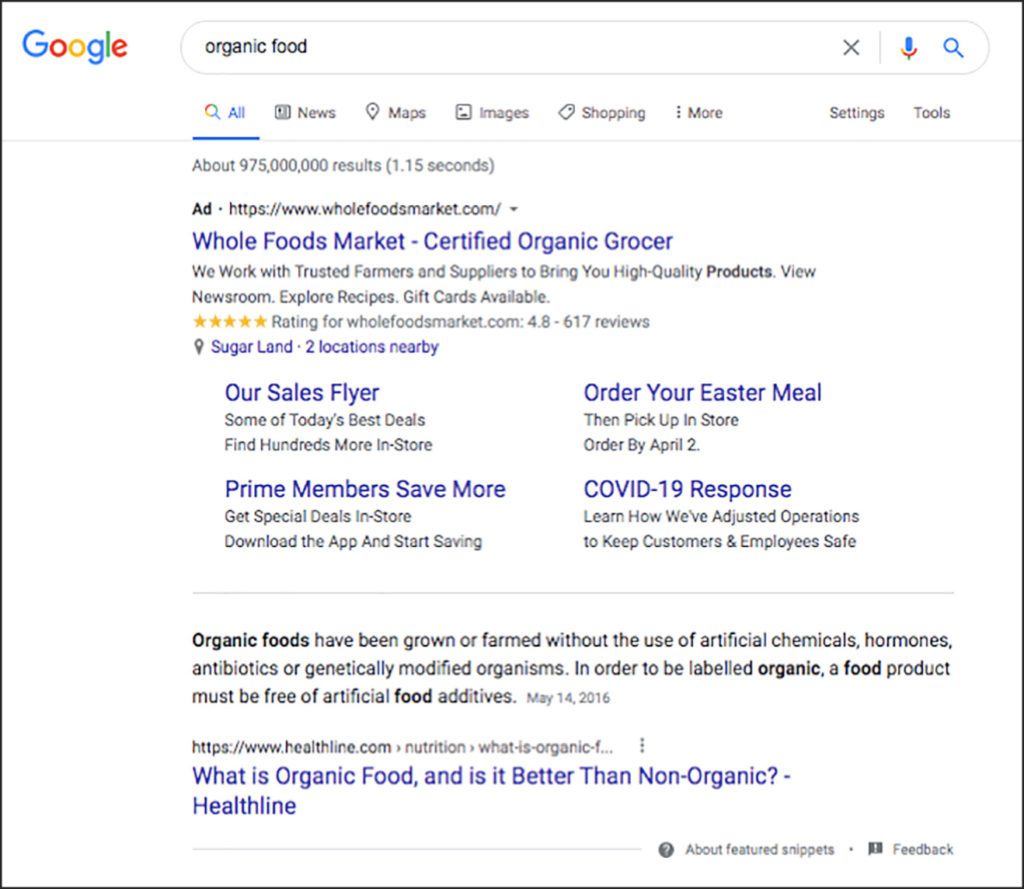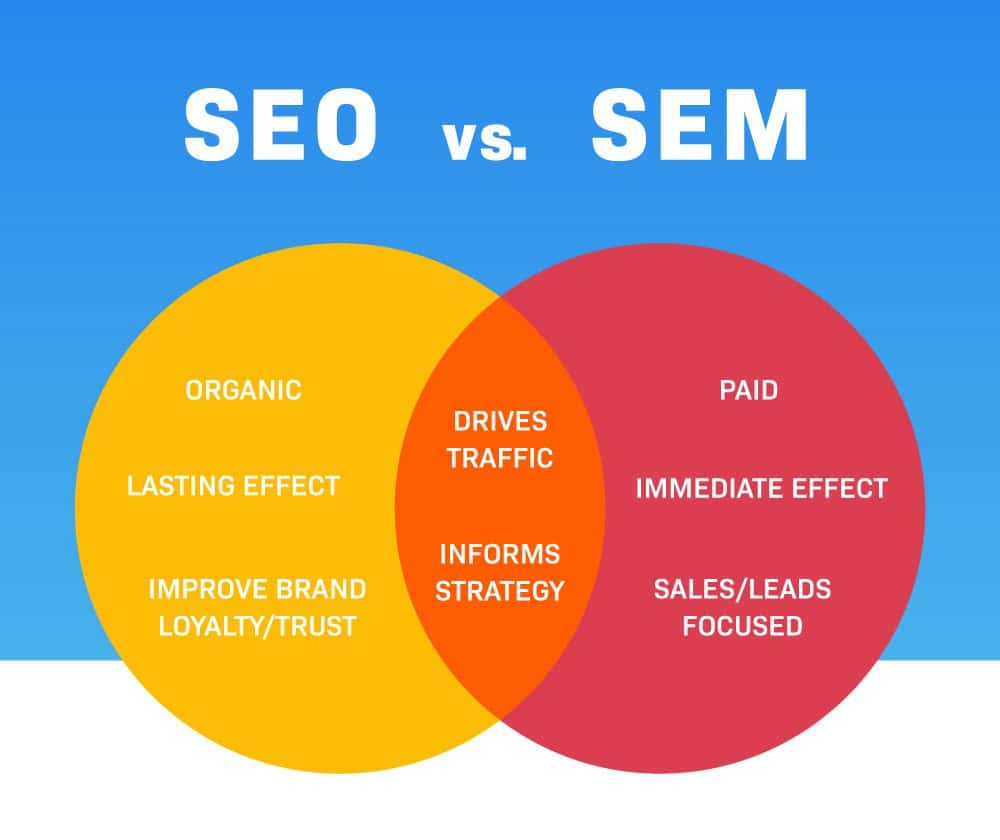Having an online marketing strategy is imperative in today’s digital world, and in a sea of information on the internet, you want your brand to stand out. Search Engine Optimization (SEO) and Search Engine Marketing (SEM) are similar tactics that are both used to increase your online visibility, making it easier for current and potential new customers to find you, thus optimizing your online performance. Continue reading to learn the basics of SEO and SEM, how they compare, and what would work best for your brand.
Before we go into the details of SEO and SEM, here are the paired-down definitions:
SEO is an approach that uses only organic methods to appear in search results.
SEM is an approach that uses organic and paid methods to appear in search results.

What exactly is SEO, and how does it work?
Search engines, such as Google, use bots to crawl pages on the web, going from site to site, and collecting information from those pages and putting them in an index.
Algorithms analyze all of the pages in the index, taking into account many factors and signals to determine the order in which the pages should appear in the search engine results. Here some, but not all, of the most important factors:
- Keywords – These are words that best describe what’s on your website, and the words people would search to find you. For example, if you’re a women’s clothing retailer in Grand Forks, North Dakota, you would use keywords like “fashion,” “Grand Forks,” and “women’s clothing store”.
- High-quality and relevant content – Rich and original content that gives consumers answers to questions and provides significant information.
- A Secure and Accessible Website – A well-coded and secure website, along with an internal site map so that the bots can easily find and crawl your pages.
- Mobile Friendliness and Page Speed – Google wants users to have the best experience, so websites with fast load times and mobile optimization are ranked higher in search results.
- Links – Having high-quality inbound links (other websites linking to your page), outbound links (linking to other valuable websites) and internal links (linking to your own pages throughout your site, like services and blogs) will increase your rank.
What exactly is SEM, and how does it work?
You can think of SEO as the foundation of SEM; SEM is a layer on top of SEO where your company would pay search engines, like Google, to list themselves at the top of the search results when a user types related or keywords. This is done most commonly through Google Ads, where brands are only charged if a user clicks on the ad (pay-per-click or PPC).
When using a search engine, you’ll see both organic SEO results and paid SEM results. Here is an example of both:

Should I use SEO or SEM?
The answer is both. You will want your site to stand on its own organically to have a lasting effect and improve brand trust, but by using paid advertising, your business can benefit from immediate leads and sales. Both will drive strategy, improve traffic, and be centered on answering questions and providing value for your customers.

Where do I begin?
While having proper SEO and SEM is necessary for your website and overall online presence to perform optimally, getting started can seem like a daunting task. This process takes time and patience but is well worth the investment and an essential part of marketing for all businesses. At Stray Media Group, we believe your brand is too important to get lost among competitors; our team will work to ensure your website gets the most visibility and exposure possible and makes the impact you’re looking for.
If you’d like to optimize your results, refresh your website, or discuss marketing strategy, please reach out to our expert team.




